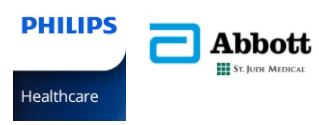21
Sep
2017
18:00
BST
Webinar
Utilisation of Next Generation Imaging Modalities and Novel Valve Technology in Transcatheter Aortic Valve Implantation (Tavi)
-
Views:
 376
376
-
Likes:
 0
0
Overview
This webinar is designed to showcase cutting edge technologies being employed by operators during Transcatheter Aortic Valve Implantation at the Charité – Universitätsmedizin, Berlin, Germany.
Imaging
Percutaneous interventions in structural heart diseases are evolving rapidly. The variety of novel percutaneous treatment approaches and the increasing complexity of interventional procedures are associated with new challenges and demands on the imaging specialist. Standard catheterisation laboratory imaging modalities such as fluoroscopy and contrast ventriculography provide inadequate visualisation of the soft tissue or three-dimensional delineation of the heart.
Consequently, novel hybrid imaging modalities such as HeartNavigator are being employed by expert centres to ensure insightful planning and guidance of their structural heart procedures. HeartNavigator is an interventional planning and live guidance tool providing physicians the insight to quickly increase their confidence in performing SHD procedures. Originally developed for TAVI, it has developed into a comprehensive multipurpose solution:
- Deeper anatomical understanding to plan and perform TAVI, TMVR, and LAAO procedures
- Immersive user experience and fully automated tasks (TAVI) simplify planning, measurement, device selection, and choice of optimal X-ray viewing angle.
Valve Selection
Aortic valve replacement (AVR) has been the mainstay of treatment of symptomatic severe aortic stenosis (AS). The role of transcatheter aortic valve implantation (TAVI ) as an alternative to surgical aortic valve replacement (SAVR) is established in any patient subsets and evolving in other younger patients as data emerges. For the majority of patients undergoing TAVI, one of the latest generation devices are generally suitable but factors such as patient-specific issues and operator experience may influence valve selection. At the Charité–Universitätsmedizin, Berlin, Germany they regularly use the Portico™ valve to maximise outcomes for their patients.
The Portico™
Transcatheter Aortic Heart Valve offers outstanding control and accuracy for optimal patient outcomes with low rates of post-procedure pacemaker implantations, complications and paravalvular leak (PVL). The valve’s unique delivery system provides controlled deployment for greater accuracy and precise placement.
Faculty:

Alexander Lauten

Axel Unbehaun
This webinar is supported by

Key Learning Objectives
- Procedural planning and techniques deployed by expert operators
- Fully repositionable and retrievable transcatheter valve technology implantation
- Novel Hybrid Imaging combining 2D CT with live fluoro
- How novel technologies can maximise clinical outcomes
Target Audience
- Interventional Cardiologists
- Cardiac Surgeons
- Structural Heart Specialists
- Nurses
- Cath-lab technicians
Faculty Biographies

Alexander Lauten
Prof. Dr. Alexander Lauten is an Interventional Cardiologist and Head of the Cath Lab and Structural Interventions Program at Charité – Universitaetsmedizin Berlin, Campus Benjamin Franklin. His clinical focus are transcatheter valve procedures and is involved in the development of multiple novel interventional strategies for heart valve disease. Prof. Lauten is an experienced operator with the SJM Portico Transcatheter Valve System including the benefits of imaging-guiding TAVI - procedure with the Philips Heart Navigator.

Axel Unbehaun
Axel Unbehaun is a senior consultant in cardiac surgery at the German Heart Center Berlin, Germany. He assumes responsibility for transcatheter therapies in structural heart disease at the German Heart Center Berlin and at Charité University Hospital Berlin.
Since 2008, he has been continuously involved in establishing and advancing the local Transcatheter Aortic Valve Implantation program with more than 2500 TAVI procedures to date. Beside his interest in contemporary cardiac surgery, he has extensive experience in comprehensive imaging-based strategy planning for transcatheter and hybrid procedures. Axel Unbehaun performs TAVI procedures with all access types. His scientific interest is focused on device landing zone complications, methodological limitations, predictors of long-term outcome, and application of transcatheter procedures under critical circumstances.
As a medical student, Axel Unbehaun obtained the Young Investigator Award at the International Congress on Electrocardiology. He received the Doctor of Medicine degree from Charité Berlin in 2000 with a thesis in physiology on linear and nonlinear dynamics in cardiac control. Afterwards, he underwent an intensive training program in cardiac surgery at the German Heart Center Berlin. In 2016, he received a PhD degree from Charité Berlin in cardiac surgery with a habilitation thesis entitled “Transcatheter aortic valve implantation: Strategies for excellent initial and long-term results”. He is the author or co-author of 75 publications, most of them focused on transcatheter heart valve therapies.
Key References
1. https://www.usa.philips.com/healthcare/solutions/interventional-xray/structural-heart-disease
2. https://www.sjmglobal.com/en-int/professionals/featured-products/structural-heart/tissue-heart-valves/aortic-and-mitral-valves/portico-aortic-valve





